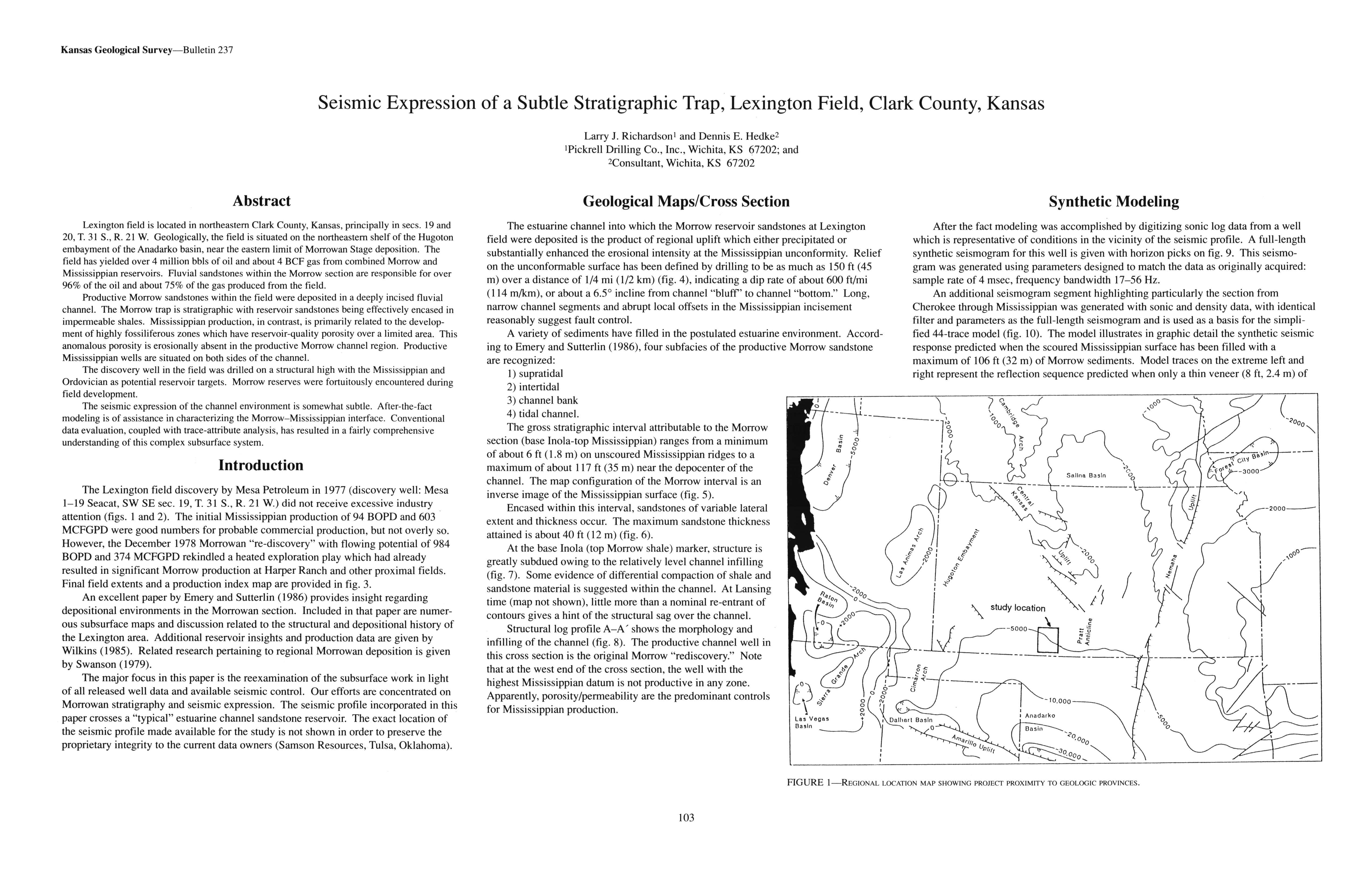Seismic Expression of a Subtle Stratigraphic Trap, Lexington Field, Clark County, Kansas
DOI:
https://doi.org/10.17161/kgsbulletin.no.237.20432Abstract
Lexington field is located in northeastern Clark County, Kansas, principally in secs. 19 and 20, T. 31 S., R. 21 W. Geologically, the field is situated on the northeastern shelf of the Hugoton embayment of the Anadarko basin, near the eastern limit of Morrowan Stage deposition. The field has yielded over 4 million bbls of oil and about 4 BCF gas from combined Morrow and Mississippian reservoirs. Fluvial sandstones within the Morrow section are responsible for over 96% of the oil and about 75% of the gas produced from the field.
Productive Morrow sandstones within the field were deposited in a deeply incised fluvial channel. The Morrow trap is stratigraphic with reservoir sandstones being effectively encased in impermeable shales. Mississippian production, in contrast, is primarily related to the development of highly fossiliferous zones which have reservoir-quality porosity over a limited area. This anomalous porosity is erosionally absent in the productive Morrow channel region. Productive Mississippian wells are situated on both sides of the channel.
The discovery well in the field was drilled on a structural high with the Mississippian and Ordovician as potential reservoir targets. Morrow reserves were fortuitously encountered during field development.
The seismic expression of the channel environment is somewhat subtle. After-the-fact modeling is of assistance in characterizing the Morrow-Mississippian interface. Conventional data evaluation, coupled with trace-attribute analysis, has resulted in a fairly comprehensive understanding of this complex subsurface system.
Downloads

